Orchid season is upon us!
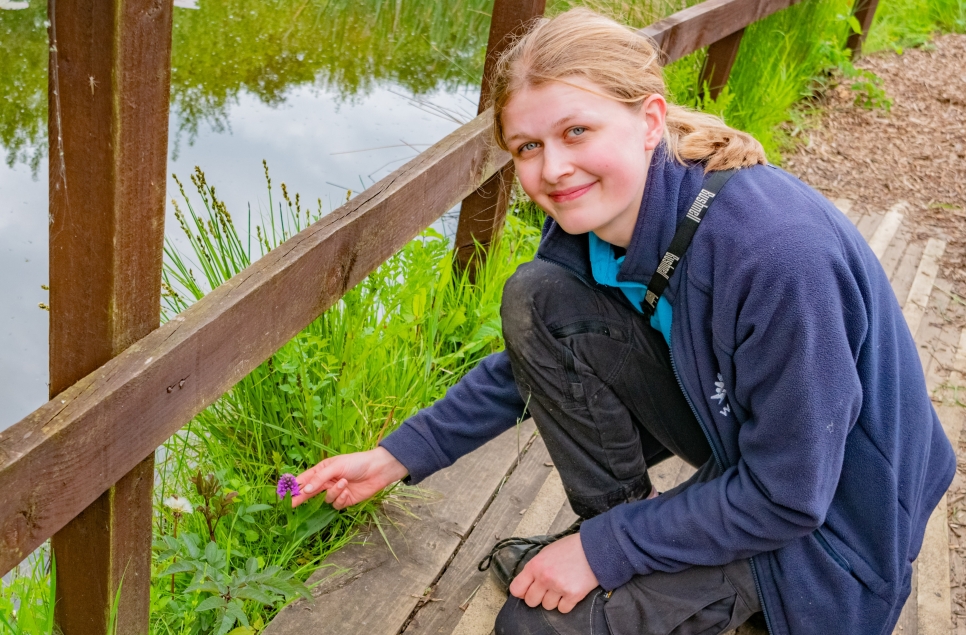
As summer approaches, we're starting to see a variety of orchids come into bloom across our meadows here at Washington Wetland Centre.
Orchids have a rich history, often associated with strong meanings and symbolism worldwide. The Aztecs, for example, saw the beauty and practical uses in them; discovering the flavours of the vanilla orchid, medicinal uses and even created a glue-like substance for repairs. In Asia, orchids have also been used for their medicinal properties and fragrances. They were used in artwork to symbolise bravery, peace and good fortune. In Ancient Rome, the image of orchids are found throughout their architecture - used as a symbol of celebration, rebirth and prosperity. Today orchids still hold that idea of elegance and beauty, making them the popular flower they are now!
Among the thousands of orchids found worldwide, the most commonly found types here at Washington include the bee orchid, common spotted orchid and northern marsh orchid - each with their own unique characteristics.
Their showy flowers, often characterised by beauty and diversity, also have an important role in keeping our ecosystems in balance through emitting its sweet scents and attracting many pollinators - varying from the ever-important bees to the versatile butterflies.
In contrast to the majority of flowers found on site, the orchids have a bilateral symmetry meaning that they can only be reflected along the mid-line. These bilateral flowers are modified to have three petals - one has become a ‘lip’ that pollinators can land on. Before they start to flower, you'll be able to see rosette of leaves on the ground, alternating on the stem.
Here’s what to look out for when spotting orchids at Washington:
Bee orchid
This flower has large pink petals, but what gives the unique name of this orchid is the brown furry lip decorated with a yellow pattern. Whilst emitting pheromones, it bears the resemblance of a female bee. Despite its deceptive guarantee of mating, the target bee is not actually found across the North East (the longhorn bee) so the flower has to use a different way to pollinate - in this case, self-pollination. Look out for these striking orchids during June to July across our grasslands – even on the verges around the play area!
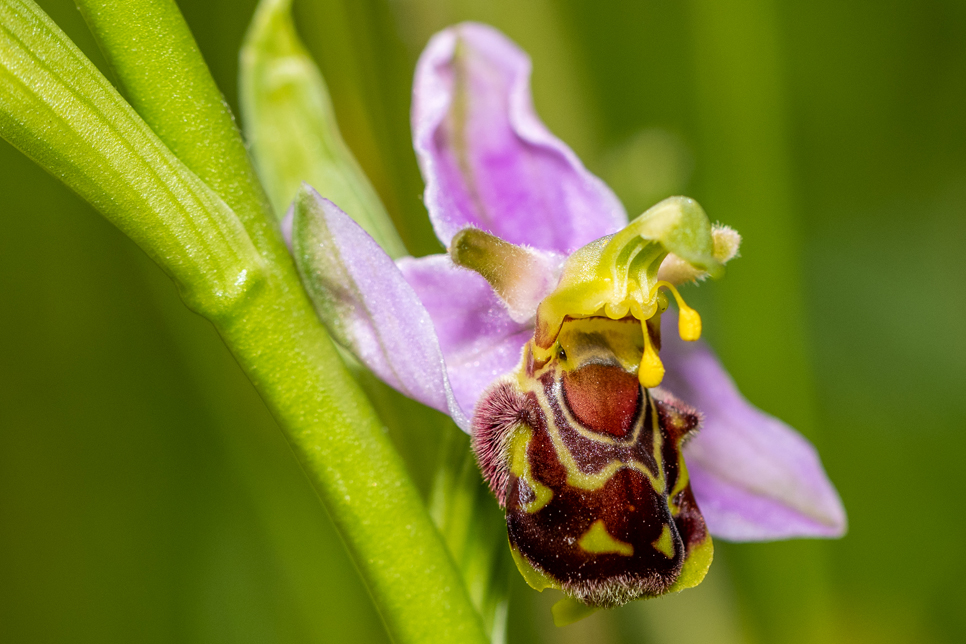
Common spotted orchid
A key identifying feature of this orchid is the spotted leaves that are green and covered in purple spots. As you look up the stem you will see a number of flowers which can range from a white to pink and purple, each petal embellished with darker spots and stripes that create a symmetrical pattern. Look out for these flowers from June to August across site from our woodlands to our grasslands. Keep an eye out at the Amphibian Ponds, some are now starting to bloom.
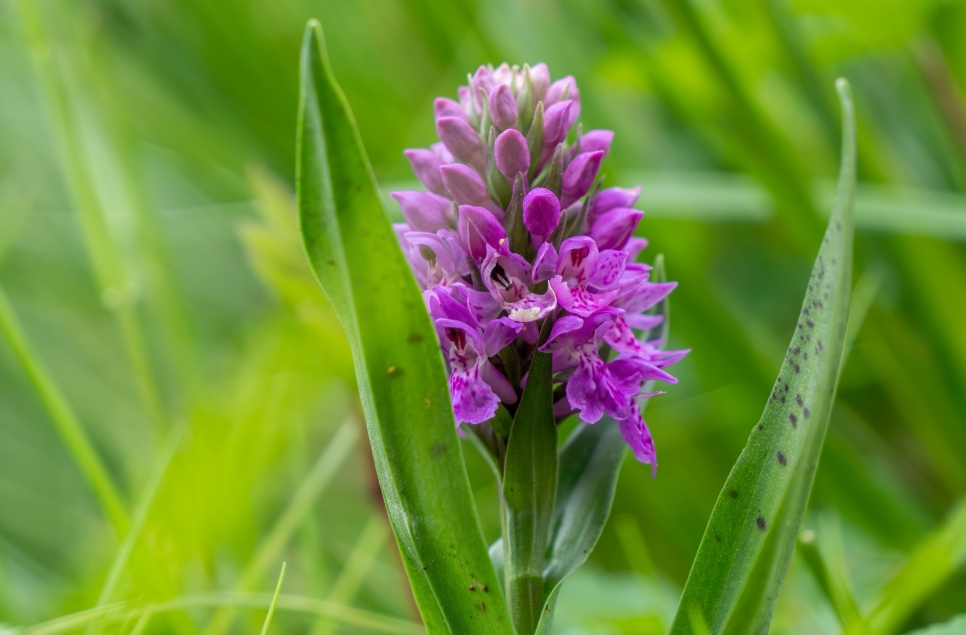
Northern marsh orchid
This orchid stands out with its rich, diamond-like purple flowers due to their angled lip, each with darker lines to create a beautiful pattern on the leaves. Similar to the spotted orchid, the flowers found on this orchid create spikes towards the top of the stem. Look out for these flowers from late May to July in our wet grasslands. Some have already been spotted at Forgotten Meadow!
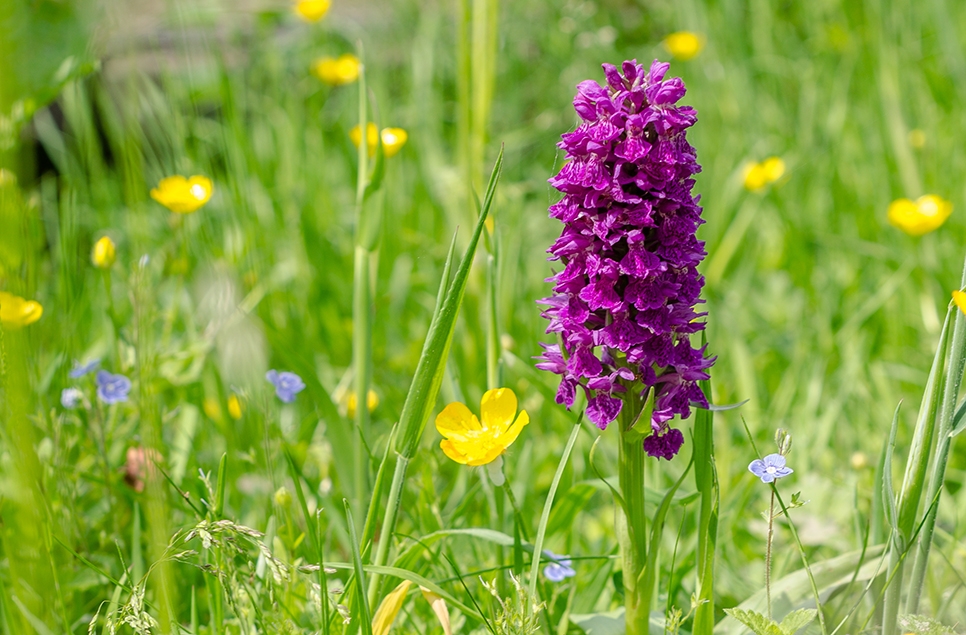
Common twayblade
Blending in effortlessley with the greenery of the meadows, the yellow-green colours of common twayblades make them difficult to spot. Once you’ve zoned in on one, it’s hard to unsee the shape of their florets, which can be in numbers of up to 100 per flowering spike and resemble lots of little green people, earning it the nickname of ‘the green man orchid’. These aren't found as regularly on our reserve, with the first only recorded in 2018.
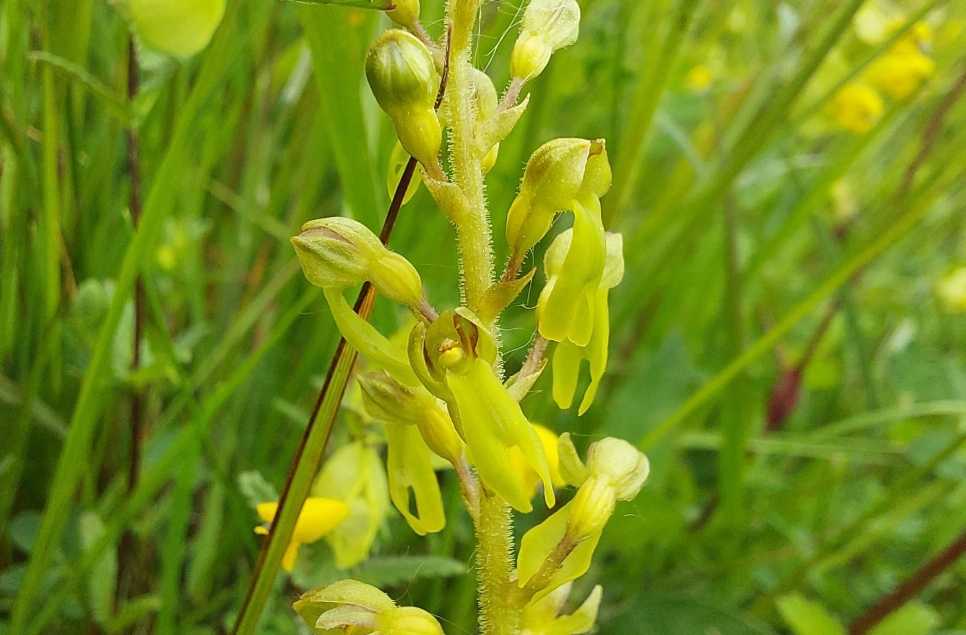
Orchids are a magnificent addition here at Washington Wetland Centre and both offer beauty and ecological benefits to our site. Be sure to keep an eye out for these stunning flowers and appreciate their unique characteristics and history.
Written by Emily Chubb, reserve placement student
Ready to visit?
If you've been inspired to explore Washington Wetland Centre and look for orchids, find out more and plan your visit online.
Plan your visit


